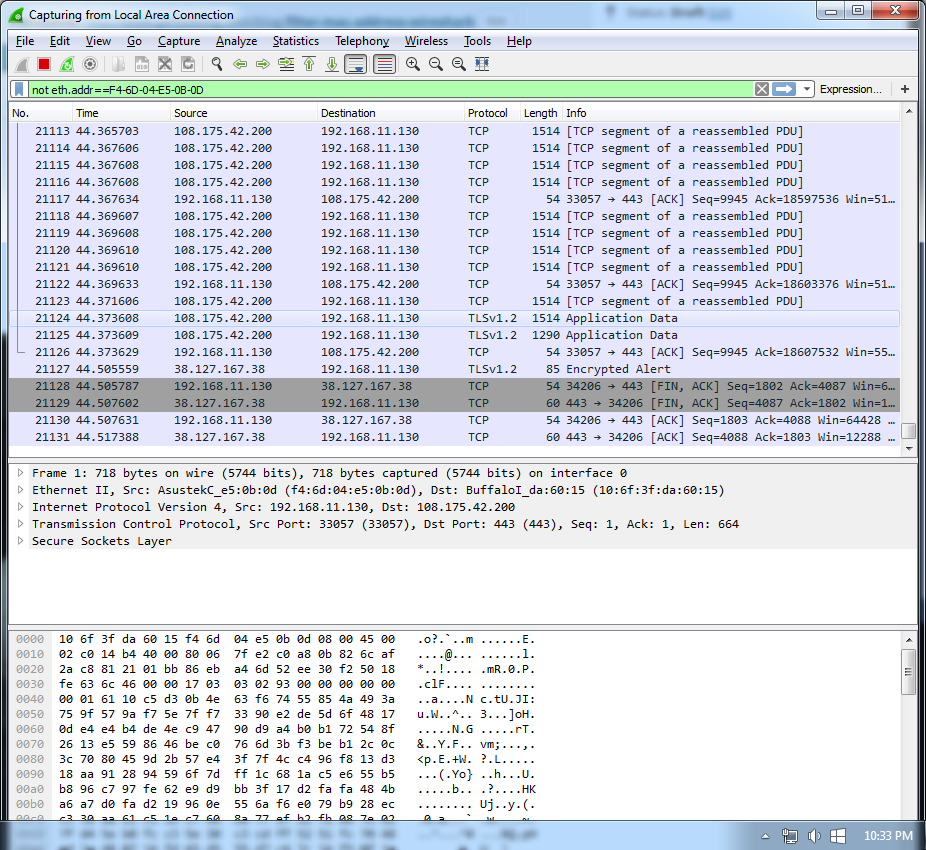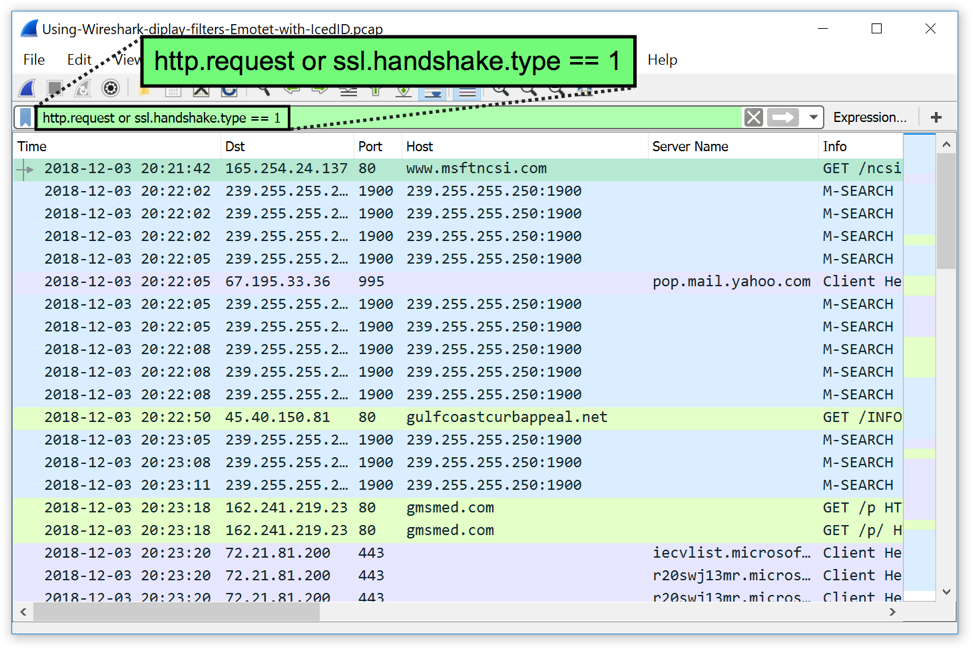

By default, light purple is TCP traffic, light blue is UDP traffic, and black identifies packets with errors-for example, they could have been delivered out of order. Wireshark uses colors to help you identify the types of traffic at a glance. You’ll probably see packets highlighted in a variety of different colors. To check if promiscuous mode is enabled, click Capture > Options and verify the “Enable promiscuous mode on all interfaces” checkbox is activated at the bottom of this window.Ĭlick the red “Stop” button near the top left corner of the window when you want to stop capturing traffic.

If you have promiscuous mode enabled-it’s enabled by default-you’ll also see all the other packets on the network instead of only packets addressed to your network adapter. Wireshark captures each packet sent to or from your system. You can configure advanced features by clicking Capture > Options, but this isn’t necessary for now.Īs soon as you click the interface’s name, you’ll see the packets start to appear in real time. For example, if you want to capture traffic on your wireless network, click your wireless interface. Don’t use this tool at work unless you have permission.Īfter downloading and installing Wireshark, you can launch it and double-click the name of a network interface under Capture to start capturing packets on that interface. Just a quick warning: Many organizations don’t allow Wireshark and similar tools on their networks. For example, if you’re using Ubuntu, you’ll find Wireshark in the Ubuntu Software Center. If you’re using Linux or another UNIX-like system, you’ll probably find Wireshark in its package repositories.

You can download Wireshark for Windows or macOS from


 0 kommentar(er)
0 kommentar(er)
